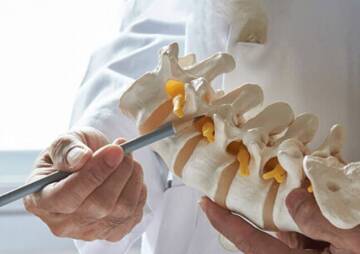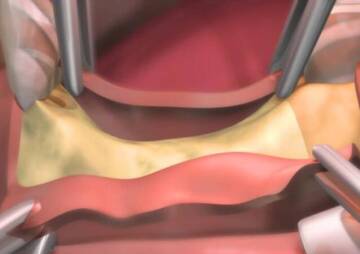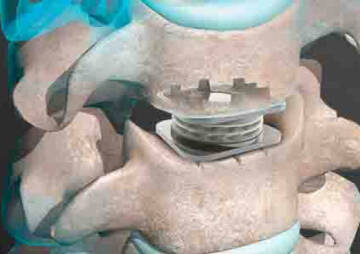-
Category
Craniomaxillofacial Surgery
Orthopedic Surgery
Spine Surgery
Orthopedic Implants
Hip Surgery
Knee Surgery
Pectus Excavatum
Bone Graft
Disinfectants
Healthcare
Facts About Cervical Spine PEEK Cage

There are different types of cervical cages, and among these, the most famous and well-known cages are the PEEK and the Titanium cages.
The patient needs to undergo spinal fusion surgery to treat the neck and the lower back pain; in this case, the surgeon will make a cervical cage in the patient's spine. There are different types of cervical cages, and among these, the most famous and well-known cages are the PEEK and the Titanium cages. Plif is a type of a PEEK cage that is also being used in cervical spine surgery. The cervical spine PEEK cages are very radiolucent, bio-inert, and are compatible with MRI. The cage will act as a space holder between the vertebrae affected, and then it allows the bone to grow and eventually becomes a part of the spine.
The cervical spine PEEK cages have a hollow center filled with a bone-growth promoting material like beta-tricalcium phosphate or even the patient's bone.
The cervical spine surgery fusion permanently connects two or even more vertebrae in the spinal cord and then eliminates motion between them. The cervical spine PEEK cages are mainly placed in front of the spine and inserted from a small and tiny cut or better with an endoscope.
By far, the most cages that are being placed through the ALIF can also be placed with the help of a small incision in the backside of the spinal cord.

What are the Different Types of Neck Surgery?
Neck surgery is best to be kept as a last resort if the other conservative methods
fail to ease the pain of the patient and are not effective at reducing the pain.
Neck surgery is not always recommended and required, but there are some instances where the surgery is the best idea.
There are different types of neck surgery. They are:
- Cervical spinal fusion: This type of neck surgery joins two of the vertebrae into a single bone piece.
A cervical spinal fusion can be performed in severe cervical fractures and recommended as a surgical treatment for a pinched nerve. Plates and metal screws are added to hold the two vertebrae and a slight decrease in some motions' flexibility due to this fusion.
- Anterior cervical discectomy and fusion: The ACDF is a surgery performed to treat spinal cord compression and treat a pinched nerve. In this kind of surgery, the surgeon will make a small incision in the neck's front portion. After that, He will remove the disk that was causing pressure. Then the spinal fusion will be performed to give stability to the area.
- Anterior cervical corpectomy and fusion: This surgery is very similar to that of ACDF, and the goal is to treat the spinal cord's compression. Here, the surgeon makes an incision in the front portion of the neck. Then, instead of removing the disk, he will remove all or some parts of the vertebrae's front area.
He then fills the space that lefts with small pieces of bone and spinal fusion. As this procedure is more involved than others, then may require longer recovery time.
- Laminectomy: The purpose of the Laminectomy process is to relieve the pressure on the spinal cord or the patient's nerves. The bony, ridged area at the back of the vertebrae is removed right after making an incision. If there are any bone spurs, disks, or even ligaments causing compression, it will be removed.
- Laminoplasty: This process is an alternative to the Laminectomy. It is performed to relieve the pressure that is on the spine and the associated nerves. Here, the lamina is not removed, and instead, the surgeon creates a hinge that will allow the open of the lamina and reduce the compression on the patient's spinal cord. The laminoplasty process's advantage enables the preservation of some motions, and the surgeon can address many areas of the contractions.
- Artificial disk replacement: This kind of surgery treats the pinched nerve in the patient's neck. During this particular surgery, the surgeon removes the disk that has been applying pressure to the nerve. Later, the surgeon will place an artificial implant in the space where the disk was previously located. The implant can be a metal or a combination of many metals as well as plastic. PEEK implant is used in the process in some cases.
- Poster cervical laminoforaminotomy: This surgery is another option for treating the pinched nerve and has incisions made in the neck's back portion. Post the incision, with the help of a unique tool, the surgeon works away from the lamina part. Additional bone or nerve will be removed if they cause pain and are pressed on the affected nerve.
What Nerves Are Affected by c5 c6 c7?
The nerve root affected by the c5 c6, and c7 disk controls the arms, the heart, the shoulder, lungs, and many more parts. In C6-C7, when disk herniation occurs and the c6-c7 nerves get irritated, the symptoms will be a pain in the neck and the arms. There will be a feeling of weakness in the patient's hands, and the patient will face hand pain, shoulder pain, chest pain, and swelling that is out of control. Misdiagnosing of the condition can happen as well.
With other disk herniation, a c6-c7 herniation can be very painful and very uncomfortable. Numbness and weakness in the shoulder, arms, and hands could direct to this condition.

Cervical Spine Surgery Complications
There can be many complications as a result of cervical spine surgery. There is the
possibility of anesthesia complications. Not all the patients are ok with the anesthesia, and some can have an allergic reaction to the anesthesia. Problems such as the drug's reaction and other issues arising from the medical issues can happen.
The other complication can be thrombophlebitis, which happens when the blood gets clotted in the patient's legs' veins. This complication is prevalent, and the blood gets solidified in the legs' veins in the calves' parts. The complication may continue even upper towards the thighs and, in some instances, even to the pelvis.
As in all the surgeries, the risk of infection in all of them is high. The disease can be another spinal cage surgery risk that occurs as a result of the surgery. It can be either around the wound or the stitches. Hence, the surgeon should clean the surrounding of the injury and the stitches' area nicely to avoid infections.
Spine operation is not easy, and it may sometimes be a continuous process where the first operation fails to ease the pain. And even in some other cases, the risk of injuring the different parts of the spinal cord during the surgery is possible, causing a significant complication.
What Are Cages and Why Is Your Surgeon Putting One in Your Spine?
Fusion surgery is done with the help of the different types of cervical cage placed in the patient's spine.
The surgeon uses the cervical spine cage during the spinal cord surgeries as it acts as a holder and holds the two vertebrae, eventually allowing the bone to grow through it and becomes a part of the spinal cord.

It is highly dependent on the number of the spinal segment that is being fused. Based on this, the surgeon decides on the number of cages that he should uses.
The PEEK and the Titanium are the most famous used materials in all the cages.
PEEK Cage Vs. Titanium Cage
The inter-body cages' fusion includes Titanium and polyetheretherketone, better known as PEEK. It has biomechanical properties. The Titanium and the PEEK cages are both associated with the same and similar fusion rates. But as seen in the Titanium, there is an increased rate of subsidence.
The PEEK cage vs. titanium cage can be that the Titanium is a material that can bear the weight and can trade flexibility for strength. On the other hand, PEEK is much more flexible compared to the Titanium. Its module is similar to the bones' cortical modules, wherein Titanium is stiffer compared to bone.

Spinal Cage Surgery Risks
The possible spinal cage surgery risk can be the risk of the ALIF. There can be risks of vascular, neurologic, and neurologic injury. The uncommon spinal cage surgery risk that can happen in the cage impinges on the nerve's root. The other dangers directly related to the cages are the misplacement, the cages' migration, and the pseudarthrosis. The latter is the most uncommon among all the spinal cage risks.
Life after cervical disc replacement
In the recovery period, there will be observations by the respective doctor as long as the patient is fully recovered. In some cases, the patient needs to stay in the hospital for a day or two and get discharged on the third day.
The majority of the people undergoing Cervical disk replacement surgery with the cervical cage's help experienced excellent and excellent results after the surgery. There is a relief from both pain of the neck and the radicular pain related to the shoulders and the arms.
After all, the surgery's goal is to give back the everyday life that the patient had to them again after the surgery.
According to a particular case study, many people were studied after the spinal PEEK cage surgery. For instance, the patients who had recovered from the surgery were all fit and fine and were even going back to their work.
The patients can work and walk and get back to their full activity by the 4 to 6th-week post after the surgery.
There is a level of satisfaction seen in both the surgeon and the patients after the cervical disk replacement surgery. Surgeons are pleased with the surgeries' outcomes, and, on the other hand, the patients are happy and satisfied with the short recovery period that the surgery takes.
It is a win-win situation where both sides are happy with the outcome. After all, the surgeon had to give a second life to the patient with the disk replacement process, and the patient is all happy about knowing that he can live and continue his life without any pain and further suffering.

Can you Bend After Spinal Fusion?
Yes, one can bend after spinal fusion. The following is a bending tip about how an individual can turn after the spinal fusion and not harm himself.
- If there is a case that the individual has to bend and it is mandatory, then it's better to crouch first and make sure that the feet are shoulder-width open for stability and then bend the knees and take the body down while making sure the back is straight and upright.
- As twisting is not permitted after the cervical cage's surgery, try to pivot instead when there is a need to twist. Better to rotate on the feet to turn the body instead of turning and keep back straight.
- While brushing, if you have the habit of leaning on the sink, it is better to open the sink's cabinet and keep the feet on the cabinet's ledge. This allows you to maintain a straight back position while brushing.
Further details can be searched and found on the Health News Center Blog, and we hope we have been able to answer all your questions and clear all your doubts.






